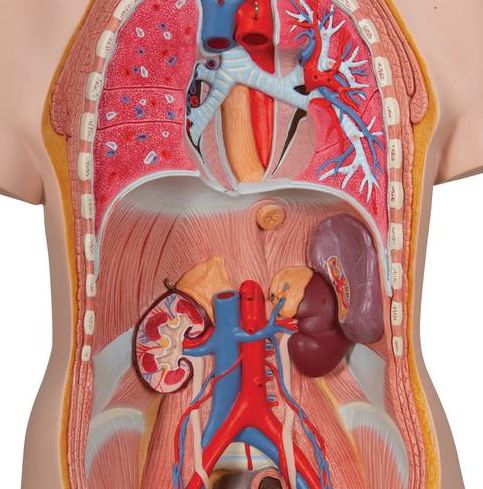قراءة لمدة 1 دقيقة Khoekhoe language

The Khoekhoe /ˈkɔɪkɔɪ/ language ("Khoekhoegowab"), or Nama ("Namagowab") /ˈnɑːmə/, Damara ("ǂNūkhoegowab"), Nama/Damara, and Hottentot, is the most common of the non-Bantu languages of Southern Africa that make much use of click consonants.
Because of that, Khoekhoe used to be Khoisan, but this group is not used now.
It is part of the Khoe language family, and is used in Namibia, Botswana, and South Africa, usually by three ethnic groups:
Namakhoen, ǂNūkhoen, and Haiǁomkhoen.
History.
The Haiǁom, who before used a Juu language, moved to Khoekhoe.
The name "Khoekhoen", is from the word "khoe" "person", copied twice and the suffix "-n" to be the general plural.
Georg Friedrich Wreede was the first European to look at the language, after going to ǁHui!
gaeb (later Cape Town) in 1659.
Status.
Khoekhoe is a national language in Namibia.
In Namibia and South Africa, state-owned broadcasting corporations make and give out radio programs in Khoekhoegowab.
It is thought that only about 167,000 users of Khoekhoegowab live in Africa, making it an endangered language.
In 2019, the University of Cape Town did an amount of short courses (classes) teaching the language, and on 21 September 2020 started its new Khoi and San Centre.
An undergraduate degree series of classes is being developed.
Dialects.
Present-day scholars generally see three dialects:
They are different enough that it possibly may be thought of as two or three different languages.
Phonology.
Vowels.
Khoekhoe uses 5 vowel qualities, seen as oral (sounds produced with the help of the mouth) /i e a o u/ and nasal /ĩ ã ũ/.
/u/ is strongly rounded, /o/ only softly.
/a/ is the only vowel with a good amount of allophony; it is pronounced [ə] before /i/ or /u/.
Tone.
Nama is seen as having three or four tones, /á, ā, à/ or /a̋, á, à, ȁ/, that may take place on different mora (vowels and final nasal consonants).
The high sound is higher when it takes place on one of the high vowels (/í ú/) or on a nasal (/ń ḿ/) than on mid or low vowels (/é á ó/).
The sounds combine, (move together) starting a small number of 'tone melodies' (word sounds), which have sandhi forms in certain syntactic places.
The most important melodies, in the way that it is said and main sandhi forms, are as follows:
Stress.
Under a phrase (part of a sentence), lexical words receive greater stress than grammatical words.
Using a word, the first syllable receives the most stress.
Syllables afterwards get less and less stress and are spoken more and more quickly.
Consonants.
Nama has 31 consonants:
20 clicks and only 11 non-clicks.
Non-clicks.
Orthography in brackets.
Between vowels, /p/ is said [β] and /t/ is said [ɾ].
The affricates strongly aspirate, and may be thought of phonemically as aspirated stops; in Korana they use [tʰ, kʰ].
Beach (1938) said that the Khoekhoe of the time had a velar lateral ejective affricate, [kʟ̝̊ʼ], commonly seen in languages with clicks.
This sound no longer occurs in Khoekhoe but remains in its cousin Korana.
Clicks.
The clicks are twice articulated consonants.
Each click consists of one of four primary articulations or "influxes" and one of five secondary articulation or "effluxes".
The mix results in 20 phonemes.
The aspiration on the aspirated clicks is usually light but is 'raspier' than the aspirated nasal clicks, with a sound like the "ch" of Scottish "loch".
The glottalised clicks are clearly voiceless because of the hold before the release, and they are used as simple voiceless clicks in the traditional orthography.
The nasal part is not able to be heard in initial position; the voiceless nasal component of the aspirated clicks is also hard to hear when not between vowels, so to foreign ears, it may sound like a longer but less raspy version of the contour clicks.
Tindall says that European learners usually pronounce the lateral clicks by placing the tongue against the side teeth and that this way is "harsh and foreign to the native ear".
The Namaqua cover the whole of the palate with the tongue and produce the sound "as far back in the palate as possible".
Phonotactics.
Lexical root words consist of two or rarely three moras, in the form CVCV(C), CVV(C), or CVN(C).
(The initial consonant is required.
) The middle consonant may only be "w r m n" ("w" is "b~p" and "r" is "d~t"), while the final consonant (C) may only be "p, s, ts".
Each mora has tone, but the second may only be high or medium, for six tone "melodies":
HH, MH, LH, HM, MM, LM.
Oral vowel lines in CVV are /ii ee aa oo uu ai [əi] ae ao au [əu] oa oe ui/.
Due to the reduced number of nasal vowels, nasal lines are /ĩĩ ãã ũũ ãĩ [ə̃ĩ] ãũ [ə̃ũ] õã ũĩ/.
Lines ending in a high vowel (/ii uu ai au ui ĩĩ ũũ ãĩ ãũ ũĩ/) are said quicker than others (/ee aa oo ae ao oa oe ãã õã/), more like diphthongs and long vowels than like vowel sequences in hiatus.
The tones are contours.
CVCV words usually have the same vowel sequences, but there are many exceptions.
The two tones are also more different.
Vowel-nasal sequences are stuck to non-front vowels:
/am an om on um un/.
Their tones are also contours.
Grammatical particles have the form CV or CN, with any vowel or tone, where C may be any consonant but a click, and the next letter cannot be NN.
Suffixes and a third mora of a root, may have the form CV, CN, V, N, with any vowel or tone; there are also three C-only suffixes, "-p" 1m.
sg, "-ts" 2m.
sg, "-s" 2/3f.
sg.
Orthography.
There have been a few orthographies used for Nama.
"A Khoekhoegowab dictionary" (Haacke 2000) uses the modern standard.
In standard orthography, the consonants "b d g" are used for words with one of the lower tone melodies and "p t k" for one of the higher tone melodies.
"W" is only used in the middle of vowels, but it may be replaced with "b" or "p" depending on melody.
Overt tone marking is otherwise generally omitted.
Nasal vowels are written with a circumflex.
All nasal vowels are long, as in "hû" /hũ̀ṹ/ 'seven'.
Long (double) vowels are written with a macron, as in "ā" /ʔàa̋/ 'to cry, weep'; these make two moras (two tone-bearing units).
A glottal stop is not written at the beginning of a word (where it is predictable), but it is written with a hyphen in compound words, such as "gao-aob" /kȁòʔòȁp/ 'chief'.
The clicks are written using the IPA symbols:
Sometimes other characters are used, like the hash (#) in place of ǂ.
Grammar.
Nama has a subject–object–verb word order, three noun classes ("masculine/gu-class, feminine/di-class" and "neuter/n-class") and three grammatical numbers ("singular, dual" and "plural").
Pronominal enclitics are used to mark person, gender, and number on the noun phrases.
Person, gender and number markers.
The PGN (person-gender-number) markers are enclitic pronouns that get on to noun phrases.
The PGN markers make a difference between first, second, and third person, masculine, feminine, and neuter gender, and singular, dual, and plural number.
The PGN markers can be cut into nominative, object, and oblique paradigms.
Articles.
Khoekhoe has four articles:
"ti", "si", "sa", "ǁî".
These articles can be combined with PGN markers.
Examples from Haacke (2013):
Clause headings.
There are three clause markers, ge (declarative), kha (interrogative), and ko/km (assertive).
These markers appear in matrix clauses, and appear after the subject.
Sample text.
After this is a sample text in the Khoekhoe language.
"Nē ǀkharib ǃnâ da ge ǁGûn tsî ǀGaen tsî doan tsîn; tsî ǀNopodi tsî ǀKhenadi tsî ǀhuigu tsî ǀAmin tsîn; tsî ǀkharagagu ǀaon tsîna ra hō.
"
In this region, we find springbuck, oryx, and duiker; francolin, guinea fowl, bustard, and ostrich; and also various kinds of snake.













































